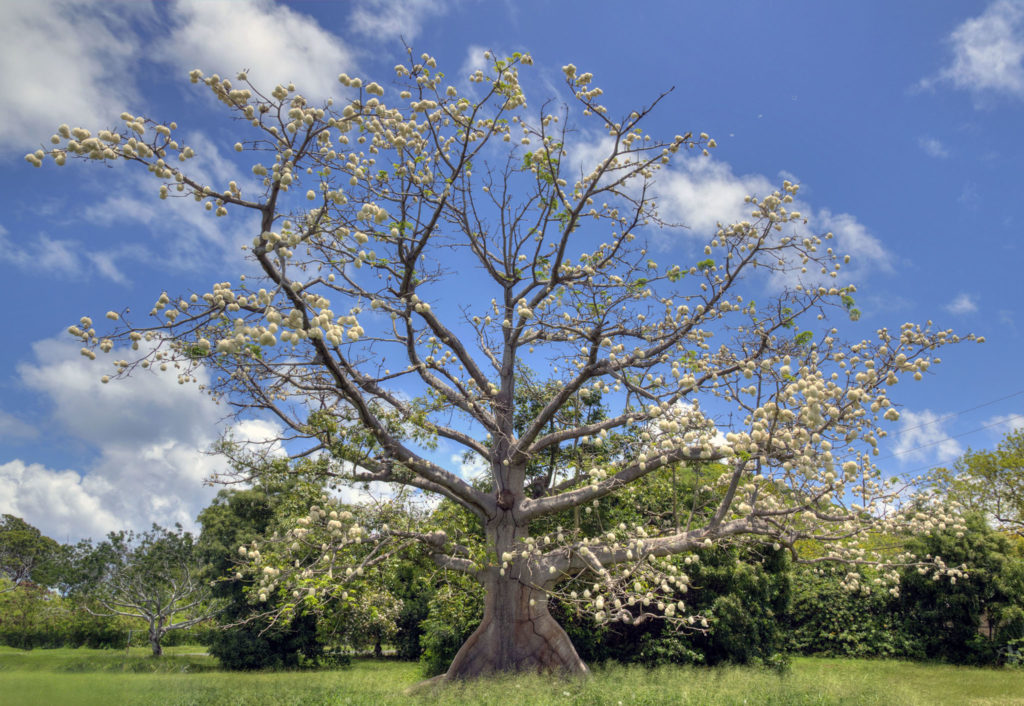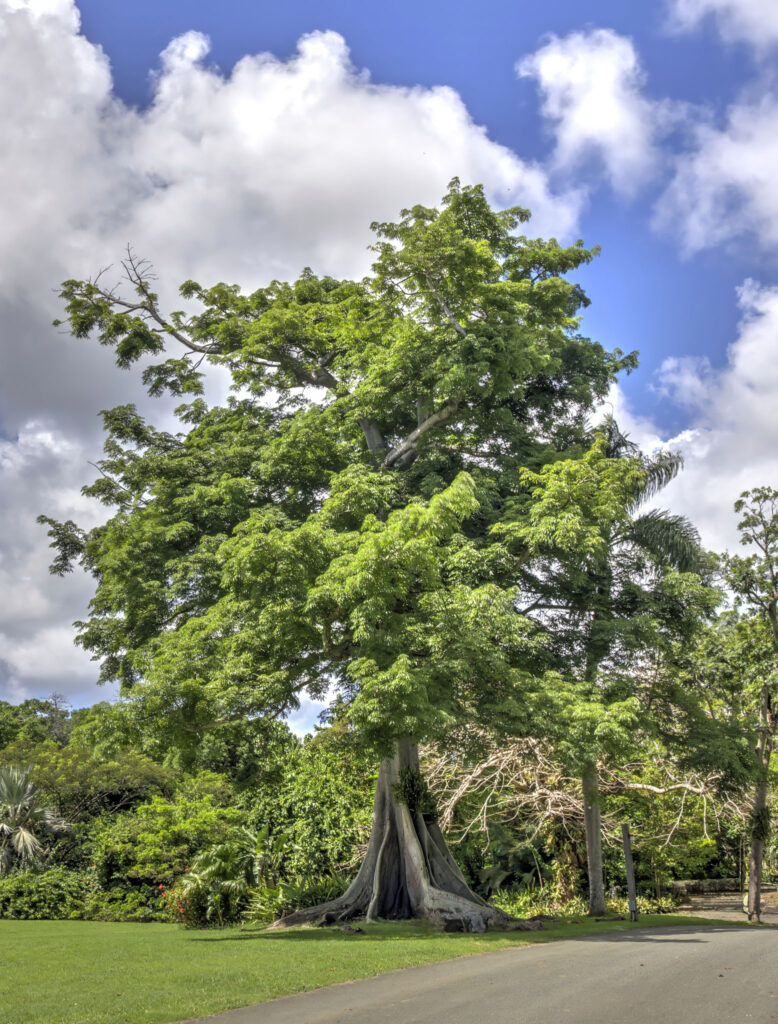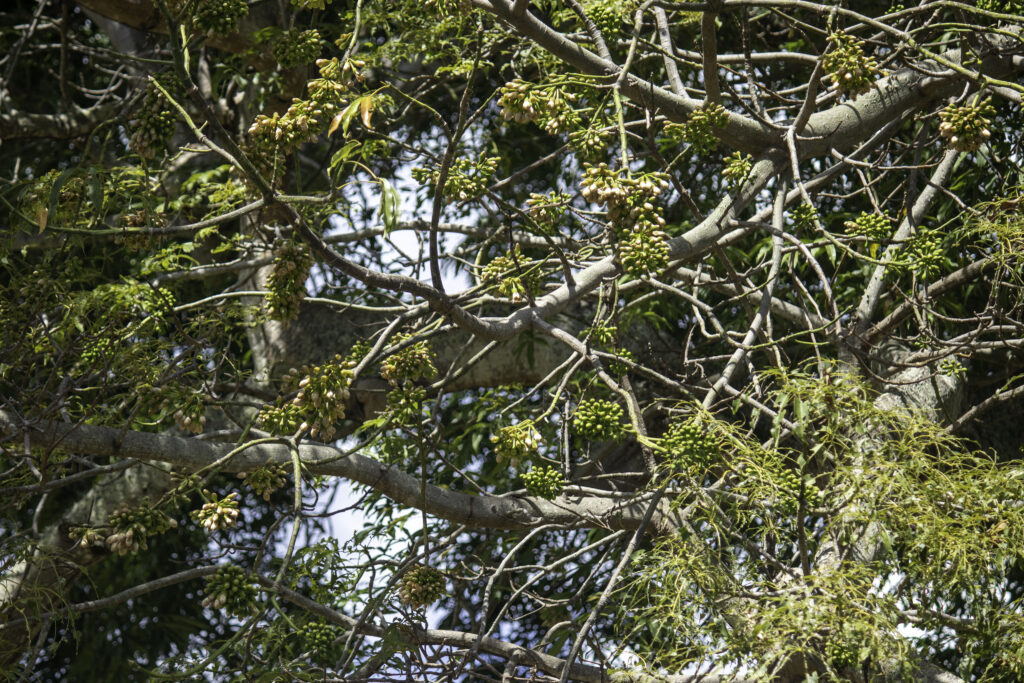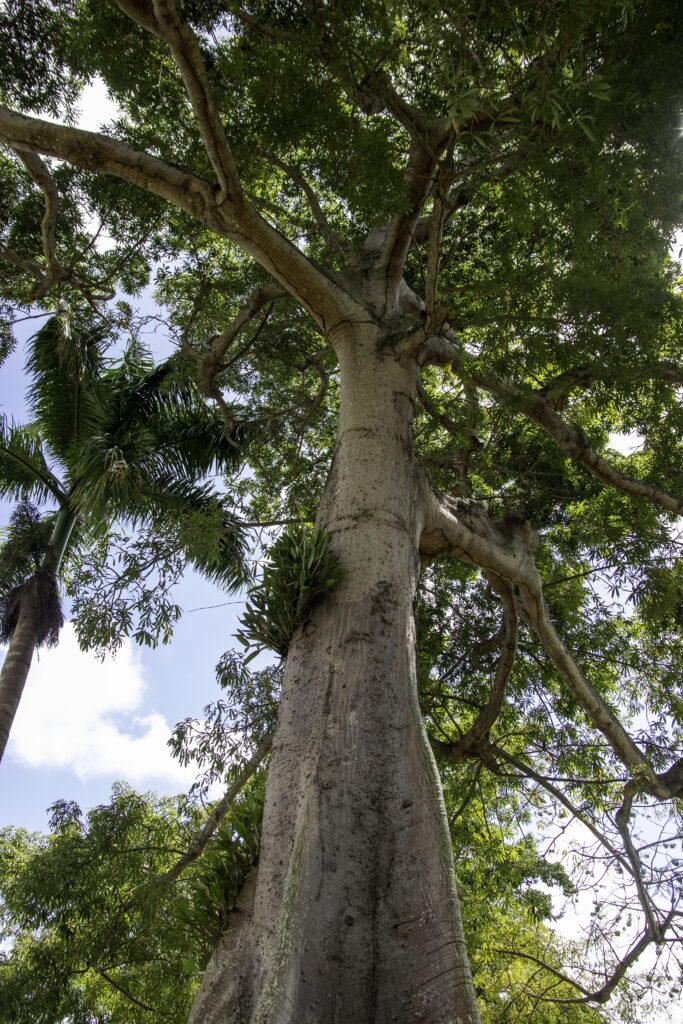Kapok Tree
Scientific name: Ceiba pentandra
Common names: Kapok, Silk Cotton Tree, Ceiba Tree, Java Cotton, White Silk Cotton Tree, Java Kapok, Ceiba Rouge, Pochote
While the Kapok tree may not be as prevalent in the USVI landscape as some other native species, its presence contributes to the biodiversity and cultural heritage of the islands, making it a valuable and cherished part of the ecosystem.
The fluffy fibers of the Kapok tree are produced within large, woody seed pods rather than as flowers. These fibers surround the seeds within the pods and aid in seed dispersal by catching the wind. This example of a Kapok is at the St Croix Yacht Club, and is in full fiber bloom.
Historically, indigenous peoples across the Caribbean region have utilized various parts of the Kapok tree for practical purposes. While specific practices may vary, some indigenous groups may have used Kapok wood for crafting canoes or other tools due to its lightweight and buoyant properties. The fluffy fibers from Kapok pods have been traditionally used for stuffing pillows, cushions, and life preservers due to their buoyancy and insulation properties.
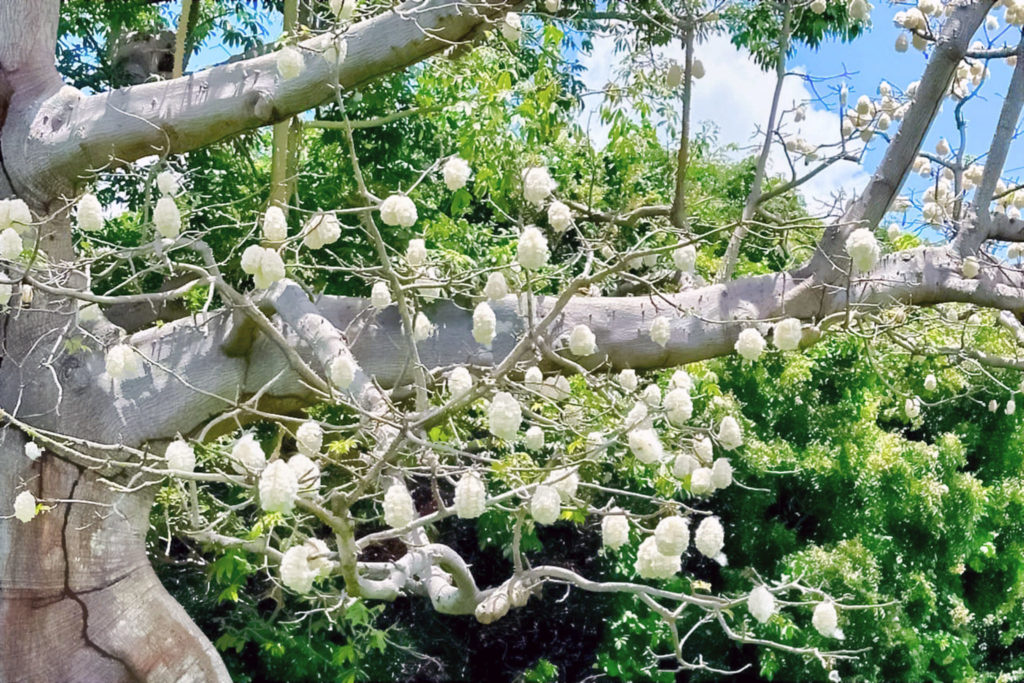
Medicinal uses:
- Anti-inflammatory Properties: The bark of the Kapok tree has been used in traditional medicine to reduce inflammation and alleviate pain associated with conditions such as arthritis and rheumatism.
- Respiratory Conditions: Infusions or decoctions made from the leaves or bark of the Kapok tree have been used to treat respiratory ailments, such as coughs, bronchitis, and asthma.
- Fever Reduction: In some traditional medicine systems, extracts from the Kapok tree have been used to lower fever and promote sweating during febrile illnesses.
- Gastrointestinal Disorders: Infusions or extracts from the Kapok tree have been employed to address gastrointestinal issues, including diarrhea, dysentery, and stomach pain.
- Wound Healing: Poultices made from crushed Kapok leaves or bark have been applied topically to wounds and skin irritations to promote healing and reduce inflammation.
